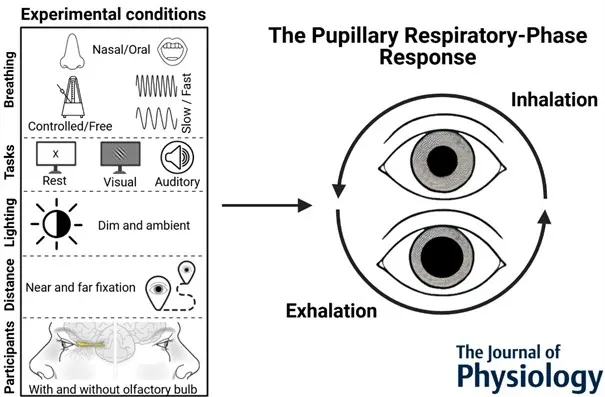Researchers at Karolinska Institutet in Sweden have discovered a fundamental mechanism that affects the size of the pupil, namely our breathing. The study, published in The Journal of Physiology, shows that the pupil is smallest during inhalation and largest during exhalation - something that could affect our vision.
Like the aperture in a camera, the pupil controls how much light reaches the eye. It is therefore fundamental to our vision and how we perceive our surroundings. Three mechanisms that can change the size of the pupil have been known for over a century: the amount of light, focus distance and cognitive factors such as emotion or mental effort.
Now scientists have discovered a fourth: breathing. The pupil is smallest around inhalation onset and largest during exhalation.

"This mechanism is unique in that it is cyclical, ever-present and requires no external stimulus," explains Artin Arshamian , associate professor at the Department of Clinical Neuroscience , Karolinska Institutet, who led the research. "Since breathing affects brain activity and cognitive functions, the discovery may contribute to a better understanding of how our vision and attention are regulated."
The researchers conducted five experiments with over 200 participants, examining how breathing affects pupil size under different conditions.
The results showed that the effect persisted whether participants breathed quickly or slowly, through their nose or mouth, if lighting conditions or fixation distance varied, if they were resting or performing visual tasks. The difference in pupil size between inhalation and exhalation was large enough to theoretically affect vision.

The study also showed that the function is intact in people born without the olfactory bulb, a brain structure that is activated by nasal breathing. This suggests that the mechanism is controlled by the brainstem, a fundamental and evolutionarily conserved part of the brain.
Investigates how vision is affected
The researchers are now investigating whether changes in pupil size during breathing also affect vision. Previous research shows that smaller pupils make it easier to see details, while larger pupils help us find hard-to-see objects.

"Our results suggest that our vision may switch between optimising for distinguishing small details when we inhale and detecting faint objects when we exhale, all within a single breathing cycle," says Martin Schaefer , a postdoctoral researcher at the same department at Karolinska Institutet and the study's first author.
There may also be clinical applications, according to the researchers.
"One potential application is new methods to diagnose or treat neurological conditions such as Parkinson's disease, where damage to pupil function is an early sign of the disease," says Artin Arshamian. "This is something we want to explore in the future."
The research was funded by the Swedish Research Council and the European Research Council (ERC). There are no reported conflicts of interest.
Publication
" The Pupillary Respiratory-Phase Response: Pupil size is smallest around inhalation onset and largest during exhalation ", Martin Schaefer, Sebastiaan Mathôt, Mikael Lundqvist, Johan N. Lundström, Artin Arshamian, The Journal of Physiology, online 21 February 2025, doi: 10.1113/JP287205.






